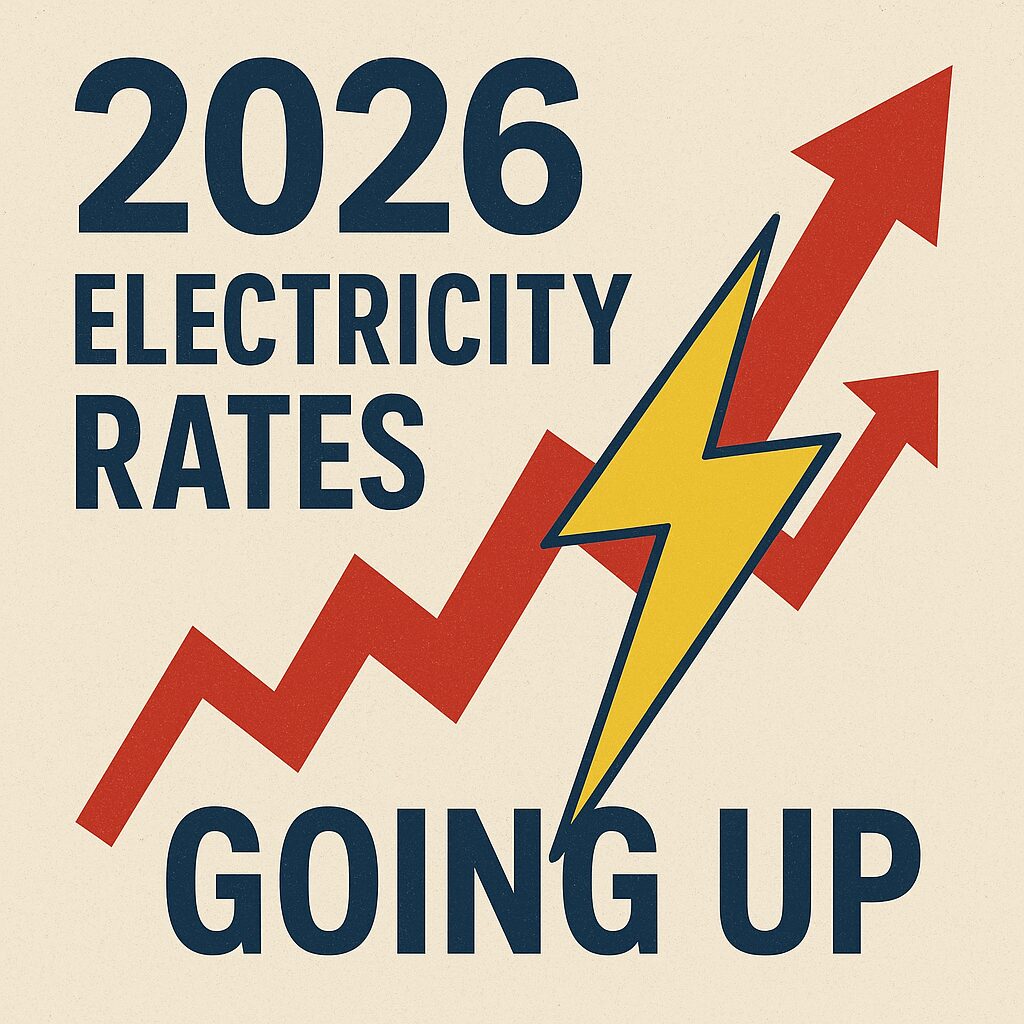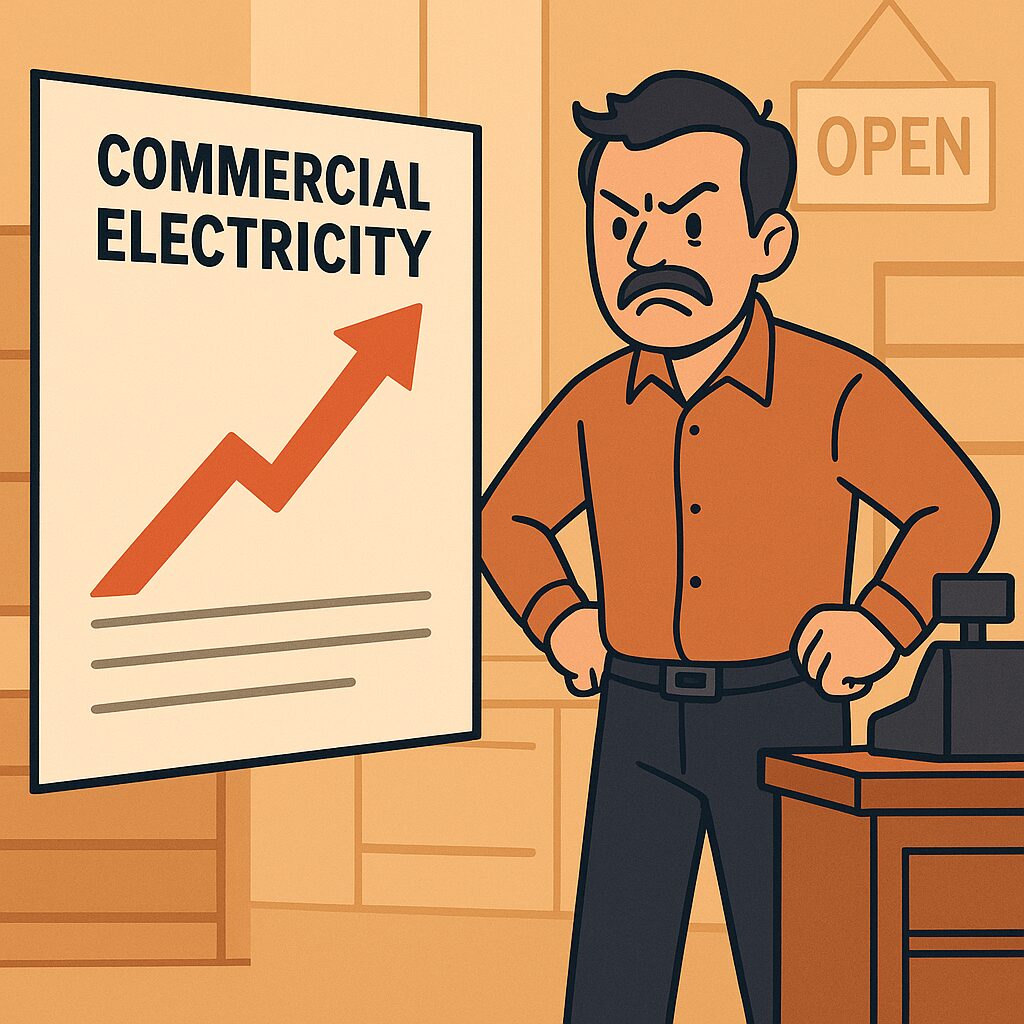2026 Commercial Electricity Projections

2026 Commercial Electricity Projections: Why Businesses Should Act Now
Introduction
Commercial electricity costs are on the rise across the United States. By 2026, the average business can expect to pay between 13.0 and 14.0 cents per kilowatt-hour (kWh). This increase is driven by a mix of supply constraints, rising demand, fuel price volatility, weather patterns, and evolving policy regulations. For businesses that depend heavily on energy, these increases represent a significant challenge.
The good news is that companies can take control now. By securing a fixed-rate electricity agreement, businesses can protect themselves from future price spikes, budget more effectively, and save money in the long run.
Understanding the Commercial Electricity Market
Electricity pricing for businesses is shaped by wholesale markets, supply contracts, and retail supplier competition in deregulated states. Prices are not set in isolation. Instead, they are influenced by a variety of economic and environmental conditions.
In deregulated states, businesses have the ability to shop and compare suppliers. This competitive environment gives companies a chance to lock in lower rates before market conditions tighten further. In regulated states, utilities often pass through higher generation costs to customers, meaning there is less flexibility but still rising risk.
For businesses, this makes it essential to monitor trends and plan ahead.
Projected Average Cost of Electricity in 2026
The projected national commercial electricity average cost for 2026 sits in the range of 13.0–14.0 cents per kWh. This projection represents a steady increase compared to 2024 and 2025 averages.

This chart illustrates monthly averages for 2026, showing a steady upward trend peaking in the summer months. Businesses with large cooling loads, such as retail centers, manufacturers, and healthcare facilities, will feel the highest impact during these peak months.
Factors Driving the Cost of Electricity
Supply Challenges
The U.S. grid is aging, and capacity additions have not kept pace with rising demand. Renewable energy sources are growing, but integrating them requires new transmission and storage infrastructure. Supply tightness often leads to higher wholesale prices, particularly during peak demand.
Demand Growth
Economic growth, population increases, and energy-intensive industries like data centers are fueling higher demand. With digitalization and electrification trends continuing, demand will keep rising in 2026 and beyond.
Fuel Costs
Natural gas is the dominant fuel for electricity generation in the U.S., and its price is highly sensitive to global market conditions. Price swings in natural gas ripple through directly to electricity costs. Coal, nuclear, and renewable energy sources provide balance but cannot fully offset the volatility of natural gas.
Weather Impacts
Hot summers and cold winters drive seasonal demand surges. Extreme weather events such as hurricanes, heatwaves, and polar vortexes disrupt supply chains and can cause sudden price spikes. Climate change has increased both the frequency and intensity of these events.
Policy and Regulations
Federal and state energy policies influence how much electricity costs. Renewable portfolio standards, carbon reduction goals, and transmission investments all add short-term costs even as they aim to deliver long-term stability.
Regional Differences in 2026 Projections
Electricity costs are not the same across the country.
-
Northeast: Higher due to congestion and reliance on imported fuels.
-
California: High prices driven by renewable mandates and grid reliability challenges.
-
Midwest: Generally lower, but still rising with demand growth.
-
Texas: Competitive deregulated market, but summer demand can create sharp spikes.
Businesses in deregulated states like Texas, Illinois, Pennsylvania, and Ohio have more opportunities to shop and compare suppliers. Those in regulated states need to rely on efficiency improvements and smart planning.
Why Businesses Should Act Now
The Value of Fixed-Rate Agreements
A fixed-rate electricity contract provides stability and cost control. Businesses can lock in a set price for 12 to 60 months, avoiding the risk of sudden spikes. This is particularly valuable in 2026, when rising demand and fuel costs are expected to push averages higher.
By securing a fixed agreement now, companies can:
-
Protect themselves from volatility
-
Plan budgets with confidence
-
Gain a competitive edge by controlling overhead costs
👉 Learn more about securing a lower rate with commercial electricity supply

